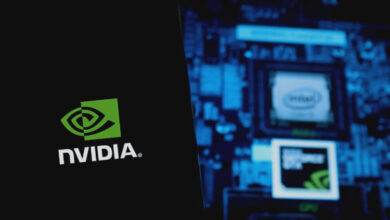Unit4’s longstanding quest to automate ERP gets a boost from generative AI

For the past decade, Unit4 has been promoting the concept of ‘self-driving ERP’, in which AI-powered predictive analytics coupled with an intelligent digital assistant can help eliminate many of the manual steps and processes associated with traditional enterprise software. But until about eighteen months ago, the concept was tough to sell. Then Open AI launched ChatGPT, and suddenly customers were no longer so skeptical. Claus Jepsen, Chief Product and Technology Officer at the vendor, recalls:
What really changed from our perspective is that, with the emergence of generative AI, like ChatGPT, what we can see is the sentiment changed in the end user community more than anything else. Until that point, when we talked with customers around how we can automate processes through technology, they were always concerned about, ‘How does it make decisions? Do we need to be in there? What can this really do? What is the proof point?’
But it seems like overnight, since the launch of Open AI, that concern has gone away. Right now, people are more like, ‘Oh, you can actually do some cool things!’
To make the most of this new enthusiasm, the vendor recently introduced a new set of context-aware Smart Automation Services, which make use of generative AI to help understand intent and provide a more conversational way of interacting with its ERPx platform through an updated version of the virtual assistant. Many of the underlying capabilities were already in place, including AppStudio, a no-code application development tool, a low-code Extension Kit, and the Industry Mesh integration service. Jepsen explains:
What we’re really looking for is just, quote unquote, ‘the intent’, and then the rest runs. We also have the ability within the extension kit, in particular, for customers to build their own flows based on their intent they can feed into the system. So that gives us this ability, and that actually leads to what I believe, and have believed for many years, is the future of ERP — essentially, that using these technologies would allow you to create way less interaction with the ERP. You’ve probably heard me talk about this notion that nobody wants to deal with ERP…
With the emergence and the broader acceptance of these technologies, we can now go in that direction and start rethinking, okay, how much do users really need to touch the ERP in the first place? And when they touch the ERP, how do we provide the best experience for users? Through conversations, or very specific interfaces that just address the single problems users need to deal with?
Technology advances
As well as people now being more receptive to AI, other technology advances have made adoption easier, he adds. When customers were more likely to still be running an on-premise instance of Unit4’s software, it was much more challenging to implement AI capabilities because of customizations and security issues. Now that customers are moving to the cloud-native, microservices-based ERPx platform, there is a consistent platform that is much easier to build automations for. He explains:
With our ERPx suite, we have a fixed data model. Nobody can alter the data model. That also allows us to create generic automation and spread it out amongst all users, because we don’t have to take into consideration that they may have changed the semantics, edited the data elements, so we don’t know what’s going on.
The key thing here, if you want to go in this direction, is that you need to have a stable data set in order to actually use these technologies. That’s, again, where different elements of our development meet, and we can now provide all these great solutions to customers.
As well as the improvements on the back-end, generative AI based on Large Language Models (LLMs) provides a more fluid, natural-language chatbot experience than was possible using earlier generations of AI. The new ingredient is this ability to use natural language to create business flows. All Unit4 has had to do is to put this together with all of the back-end capabilities it had already developed. Jepsen explains:
We have the full back-end system already running. So for example, when we understand what the user wants to do, we have the code, the platform, the APIs, and everything ready to be actually be repurposed. So what we’re using with gen AI, when we talk about the next generation digital assistant, is that we take the learning, so we take the LLMs to give users a better experience in using conversational UIs. But we don’t really need to go build another new technology, because the back-office technology is already in place. So we are taking this better experience in terms of communicating with a chatbot, having a more fluent, human-like if you want, conversation and link it back. So you get a better experience in using the conversational user experience than you had before.
Looking to the future, it may even be possible for the AI to suggest process improvements based on benchmarking across the customer base. He explains:
One of the things we’re working on is to be able to give users a set of KPIs back on [for example], how long does it take to run a procurement process, where is time spent? Then you can map it out with normalized KPIs over companies, so we can give CFOs, CIOs, saying, ‘Hey, it takes you an hour to run this process, but if we look at other similar companies, they do it in 15 minutes, maybe that’s something you need to go revisit here.’
Now that the technology barriers have been removed, the one remaining barrier is for customers to embrace change. He says:
It’s probably not so much the technology especially, but there’s a resistance to changing what works. I think some of that fear is grounded in previously, when they went to change something, things would start breaking left and right. Now they can change things in their own processes without causing harm in the ERP and vice versa.
My take
As Jepsen’s comments illustrate, there’s a sense in which generative AI is just ‘the icing on the cake’ that completes a longer journey towards AI-powered automation in enterprise software. But to take advantage of what it has to offer, organizations must first bring their IT architecture up-to-date. This will be front of mind as customers gather for the vendor’s X4U event in Dallas next week, where migration paths from on-premise to cloud feature strongly on the agenda as part of the journey to more automated processes.



